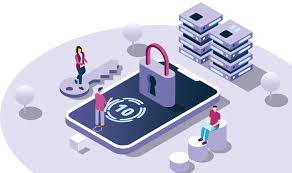How to Secure Your Digital Life: Tips for Online Privacy in 2025
In an increasingly digital world, securing your online privacy is more important than ever. With the rapid growth of social media, cloud services, smart devices, and the Internet of Things (IoT), our personal data is constantly at risk of being exposed, stolen, or misused. By 2025, the digital landscape will continue to evolve, and cyber threats will become more sophisticated, making it crucial for individuals to take proactive measures to protect their privacy and digital identities.
This article will provide you with essential tips on securing your digital life, from strengthening passwords to navigating emerging technologies with confidence. By following these tips, you can safeguard your online presence and ensure your personal information stays private in an increasingly connected world.
1. Use Strong, Unique Passwords for Every Account
One of the simplest yet most effective ways to secure your digital life is by using strong, unique passwords for each of your online accounts. A strong password typically includes a mix of uppercase and lowercase letters, numbers, and special characters. Avoid using easily guessable information like your name, birthdate, or common words.
By 2025, password security will remain a critical factor in online privacy. However, traditional passwords alone are not enough to protect your accounts from hackers and data breaches. The use of multi-factor authentication (MFA) will be crucial to enhance password protection.
Tips for Creating Strong Passwords:
- Length matters: Aim for a password that is at least 12 characters long.
- Avoid reuse: Do not use the same password for multiple accounts to reduce the risk of a single breach affecting all your accounts.
- Use a password manager: A password manager helps you securely store and generate complex passwords for all your accounts.
2. Enable Multi-Factor Authentication (MFA)
In 2025, multi-factor authentication (MFA) will be a standard practice for securing online accounts. MFA adds an extra layer of security by requiring more than just a password to access your account. It typically involves something you know (password), something you have (a phone or authentication app), or something you are (biometrics, such as a fingerprint or facial recognition).
By enabling MFA on your accounts, you significantly reduce the chances of unauthorized access, even if someone manages to steal your password. Popular MFA methods include SMS-based codes, email verification, and app-generated one-time passcodes (OTPs).
How to Implement MFA:
- Check for MFA options: Many services like Gmail, Facebook, and banking apps offer MFA. Make sure it’s activated in your account settings.
- Use an authenticator app: Apps like Google Authenticator or Authy provide additional layers of security beyond text messages.
- Consider biometric authentication: If available, use fingerprint or face recognition features to protect sensitive accounts like your smartphone, banking apps, or email.
3. Be Mindful of What You Share Online
By 2025, online privacy concerns will likely be even more pronounced as data collection practices become more pervasive. Social media platforms, websites, and apps will continue to gather vast amounts of personal information, often without our full awareness. Being mindful of the information you share online can help protect your privacy.
Avoid oversharing on social media, particularly sensitive details like your location, travel plans, or personal identifiers. Cybercriminals often exploit this information to engage in identity theft, phishing scams, or social engineering attacks.
Tips for Limiting Your Online Footprint:
- Adjust privacy settings: Regularly review the privacy settings of your social media profiles and online accounts to control who can see your posts and personal details.
- Think before sharing: Avoid posting personal information such as your phone number, address, or birthdate on public platforms.
- Limit location tracking: Disable location services for apps that do not require it, and avoid sharing your location in real time.
4. Protect Your Devices with Encryption
Encryption is a powerful tool for securing your digital life. It transforms your data into unreadable code, ensuring that even if a hacker gains access to your device or network, they won’t be able to decipher your personal information without the proper decryption key.
By 2025, encryption will be standard across many devices, but it’s still essential to ensure that you’re utilizing this technology to protect sensitive information, especially on your smartphones, laptops, and cloud storage accounts.
How to Encrypt Your Devices:
- Use built-in encryption tools: Both Windows and macOS offer full-disk encryption tools (BitLocker and FileVault, respectively) to protect your device data.
- Encrypt your mobile devices: Enable encryption on your Android or iOS device through their respective settings to protect your personal data.
- Encrypt cloud backups: When backing up important files to cloud storage, make sure the data is encrypted before being uploaded.
5. Stay Vigilant About Phishing Scams
Phishing attacks are a common method used by cybercriminals to steal personal information. These attacks often come in the form of fake emails, text messages, or websites that appear legitimate but are designed to trick you into entering sensitive data like usernames, passwords, and credit card numbers.
By 2025, phishing techniques will become even more sophisticated, making it harder to detect fraudulent communications. Staying vigilant and practicing caution is essential to avoid falling victim to these scams.
How to Spot and Avoid Phishing Scams:
- Examine the sender’s address: Phishing emails often come from addresses that look similar to legitimate ones but have small differences.
- Avoid clicking on suspicious links: Hover over links before clicking to ensure they lead to a trustworthy website. If unsure, type the website URL directly into your browser.
- Look for signs of urgency: Phishing emails often use urgent language to prompt immediate action, such as threatening account suspension or asking for personal information.
- Verify before responding: If you receive a suspicious email, contact the organization directly through official channels to confirm the legitimacy of the request.
6. Use a Virtual Private Network (VPN)
A Virtual Private Network (VPN) is an essential tool for protecting your online privacy, especially when using public Wi-Fi networks. A VPN encrypts your internet connection, masking your IP address and preventing hackers from intercepting your online activities.
As we approach 2025, using a VPN will become even more critical as data privacy concerns escalate. VPNs allow you to browse the internet securely, ensuring that your browsing history, login credentials, and personal data remain private.
How to Choose and Use a VPN:
- Select a trusted VPN provider: Look for a reputable VPN service that does not log your online activities.
- Use a VPN on public networks: Always enable your VPN when connecting to public Wi-Fi networks, such as those in cafes, airports, or hotels.
- Check for a kill switch feature: A kill switch automatically disconnects your internet connection if the VPN service fails, preventing your data from being exposed.
7. Regularly Update Software and Operating Systems
Keeping your devices’ software and operating systems up to date is a crucial step in maintaining online privacy and security. Software updates often include important security patches that fix vulnerabilities that could be exploited by cybercriminals.
By 2025, updates will be released more frequently, addressing emerging threats and improving the overall security of your devices. Ignoring these updates can leave you vulnerable to malware, ransomware, and other malicious attacks.
Tips for Keeping Software Up to Date:
- Enable automatic updates: Set your devices and apps to update automatically to ensure you never miss a critical security patch.
- Update third-party apps: Don’t just rely on system updates—keep all third-party applications up to date as well, particularly those that handle sensitive information.
- Stay informed: Keep an eye on security advisories for the software and services you use regularly.
8. Control Your IoT Devices
The growing prevalence of IoT devices—ranging from smart speakers and home security systems to connected appliances and wearables—has introduced new privacy risks. These devices often collect vast amounts of personal data, which can be vulnerable to hacking or misuse if not properly secured.
As we move towards 2025, securing your IoT devices will be essential to maintaining your online privacy. Many of these devices have weak or default security settings, making them easy targets for cybercriminals.
How to Secure Your IoT Devices:
- Change default passwords: Many IoT devices come with default passwords, which are often easily guessed by hackers. Change these passwords to something unique and strong.
- Update device firmware: Ensure that your IoT devices are running the latest firmware and security updates.
- Use a separate network: Set up a separate Wi-Fi network for your IoT devices to isolate them from your primary network, reducing the risk of an attack.
9. Be Aware of Data Collection and Privacy Policies
As digital services become more integrated into our lives, companies will continue to collect large amounts of personal data. By 2025, it’s crucial to understand the privacy policies of the apps and services you use, as many companies may sell or share your data with third parties.
Take the time to review privacy settings and adjust them to limit the data you share, particularly on social media platforms, online shopping sites, and streaming services.
Tips for Protecting Your Data:
- Review privacy policies: Before using any online service, review its privacy policy to understand how your data will be collected and used.
- Opt-out of unnecessary data collection: Look for options to limit data sharing, such as disabling location tracking or opting out of targeted advertising.
- Use services that prioritize privacy: Consider switching to privacy-focused search engines, email providers, and social networks that don’t track your personal data.
Conclusion: Protecting Your Digital Future
As we head into 2025, digital privacy will remain a top concern for individuals worldwide. By implementing the strategies outlined in this article—such as using strong passwords, enabling multi-factor authentication, and staying vigilant against phishing scams—you can significantly reduce your risk of falling victim to cyber threats. With the










Leave a Comment